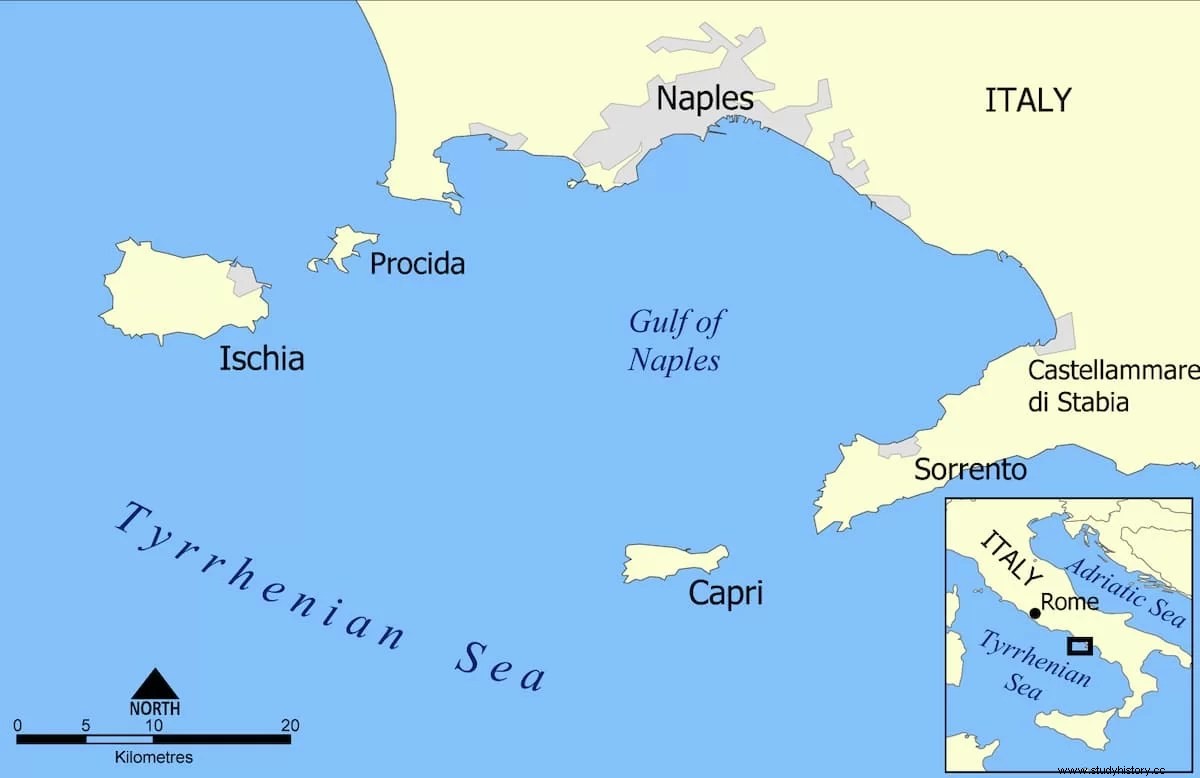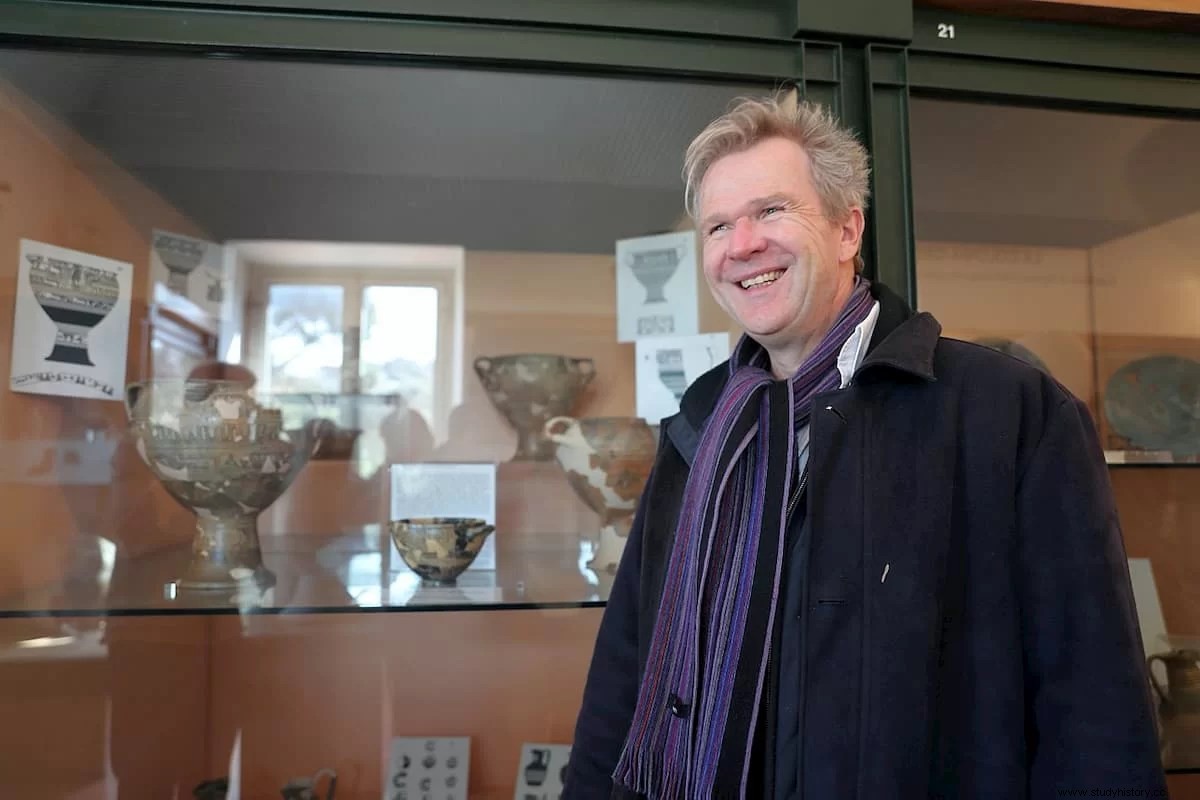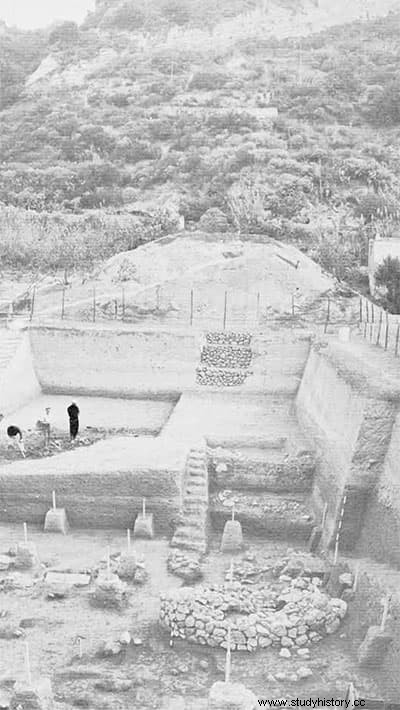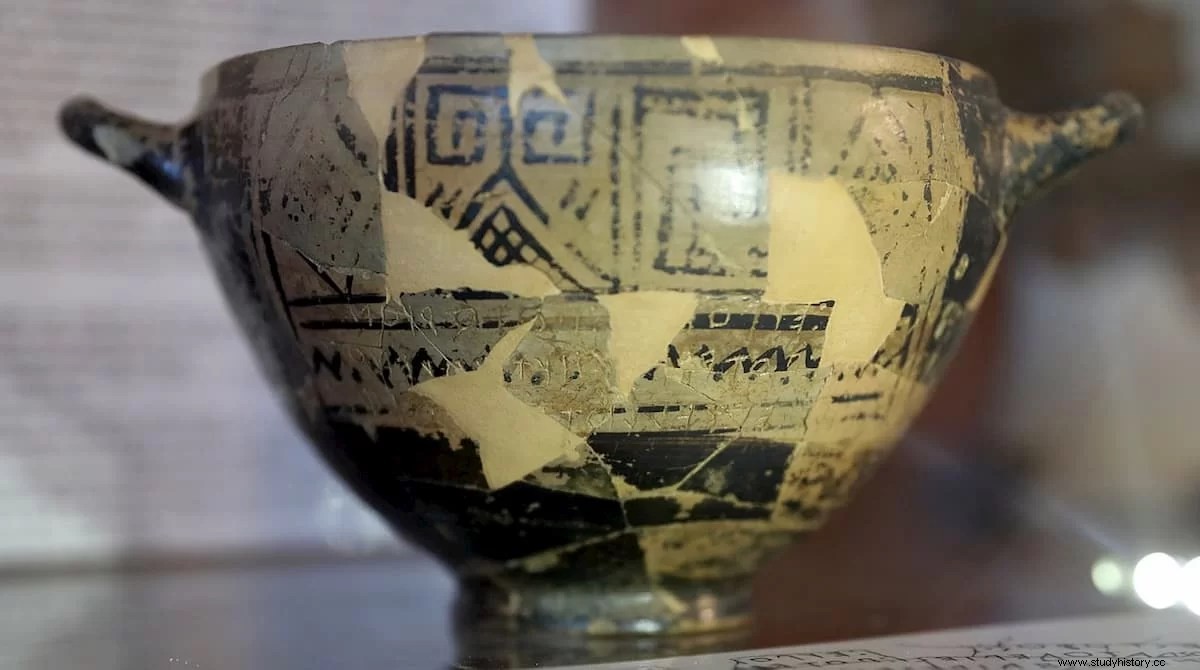In 1949 the Italian-German archaeologist Giorgio Buchner began working as an official of the Archaeological Superintendence of Naples, excavating first the Castiglione hill and then in the San Montano valley in the municipality of Lacco Ameno, on the island of Ischia located off entrance to the gulf at the northern end of the Neapolitan city.
There he discovered the necropolis of the ancient Greek colony of Pithecusas, founded by Euboeans from Eretria and Chalcis in the 8th century BC, and who a century later would found from there the first Greek colony already on the mainland in the Italian peninsula, the city of Cumae.
In the necropolis Buchner found abundant jewelry, ceramics, terracotta sculptures, Egyptian scarabs, lead ingots, loom weights, tools and many other interesting objects.

But among all this he made a sensational find:among the rich trousseau of tomb 168, of a boy between 10 and 14 years old, he found in 1953 a kotyle (cotyla, small deep cup with two handles, similar to a skyphos but smaller) barely 10 centimeters high.
The small ceramic cup appeared in several pieces that Buchner himself restored. According to Nicholas Coldstream it dates from 720-700 BC. It had been made on the island of Rhodes and decorated in the geometric style characteristic of the time.

On one of its faces it bears an engraved inscription, an epigram of three lines in the Euboean alphabet written from right to left, in the Phoenician style like all the oldest Greek inscriptions. He says like this:

The epigram alludes to the famous cup described in a passage from the eleventh book of Homer's Iliad:
The translation of the inscription depends on how the gap at the beginning is interpreted. It may be a comparison between the cup itself and the legendary cup of Nestor described in the Iliad, or it may be identifying the item as Nestor's property. Until the 1990s, the latter was the most generally accepted proposal. Today the former prevails.

The investigations and discoveries of Buchner served for the island of Ischia to be recognized as the first colony of Magna Graecia. But the small ceramic pot, which he called the Cup of Nestor , would bring several more surprises.
The inscription it bears turned out to be the oldest written example of Greek poetry found so far. And not only that, since it alludes to the Homeric poem, it is the oldest written reference to the Iliad.
Furthermore, since the inscription would date from 720-700 B.C. It would be well before the crystallization dates of the Iliad, around 680-640 BC. according to Martin West. This suggests that the cup of Nestor he must have been much more famous than the brief description of him in the Iliad indicates.
Which leads some experts to think that Homer was alluding to another passage in the Epic Cycle in which he would describe it to you more fully.

But there is still more. It can be considered the first known reference to the Greek alphabet. And since the alphabet in which it is written is Euboean, it would also be the first precursor to the Latin alphabet. Because the Euboean alphabet, the one used on the Greek island of Euboea, is one of the ancient Greek alphabets that had a Λ that looked like a Latin L, a Σ very similar to a Latin S, as well as others whose shapes foreshadowed the Latin forms:Γ in the form of a pointed C, Δ in the form of a pointed D and Ρ in the form of an R. The contact in Pithecusas between Euboeans and Etruscans made this alphabet the one that originated the Etruscan alphabet, and from it the Latin one that we still use was derived. today.
And there is still one more detail that makes this little cup an intriguing and truly exceptional object. The Greek grammarian Athenaeus of Naucratis, who wrote between the late 2nd and early 3rd century AD. during the reigns of Marcus Aurelius and Commodus, he performs in book XII of his work Deipnosofistas (The Banquet of the Scholars) a complete description of Nestor's cup (perhaps knowing the original description of the Epic Cycle lost today). Well, two replicas that follow that same description were deposited in the Temple of Diana Tifatina in Capua, just a few kilometers inland from Naples and Pithecusas.
And remember that Strabo says that the city of Metaponto, near Tarentum, was founded by colonists from Pylos who sailed with Nestor back from the Trojan War.

Those who made those replicas for the temple of Diana in Capua could not have known the little cup of Nestor that dated from at least 7 centuries before and had been buried in the necropolis of Pithecusas.
Giorgio Buchner himself, in an article published in 1966 entitled Pithekoussai:Oldest Greek Colony in the West he said that the inscription represents the first piece of Homeric epic poetry preserved in its contemporary script .
